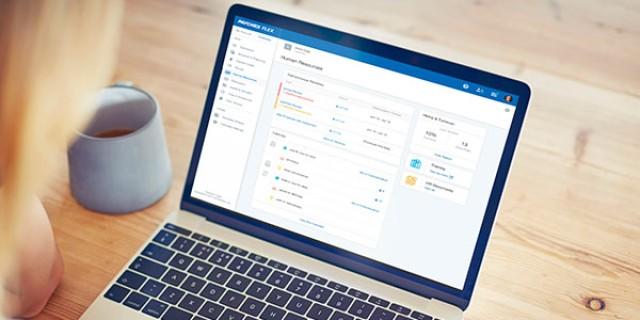- Employment Law
- Article
- 6 min. Read
- Last Updated: 12/02/2025
Washington State Paid Family and Medical Leave: What Businesses Should Know About 2026 Changes

Table of Contents
The state of Washington’s Paid Family and Medical Leave (PFML) program offers eligible employees job-protected paid leave for qualified reasons.
Employers and employees can expect changes starting Jan. 1, 2026, after the governor signed an amendment to the law in May 2025 and the state legislature passed an omnibus appropriations bill (also signed into law) in June 2025 to fund the changes. The amendment will expand job protection and health benefits continuation, lower the minimum claim duration, mitigate coordination of leave issues with FMLA covered leave, and offer relief grants to small businesses.
Who Is a Covered Employer Under Washington PFML?
In general, all employers, including out-of-state businesses, with at least one employee working in Washington are considered “covered employers” and subject to the state paid family leave law.
Federal employees, federally recognized Native American tribes, self-employed individuals, and any business that had a collective bargaining agreement (CBA) in existence prior to Oct. 19, 2017, are exempt from the requirements. However, everyone in that group except federal employees can opt-in to the program if they meet certain requirements.
Who Pays for PFML in Washington State?
The 2025 premium rate is 0.92% of an employee’s gross wages, up to the Social Security maximum of $168,600. Employers and employees are responsible for contributing, with the employers paying 28.48% and employees giving 71.52% of the premium.
Effective Jan. 1, 2026, the premium rate increases to 1.13%, with employers paying 28.57% and employees paying 71.43% of the premium. The Social Security maximum increases to $184,500
However, business with fewer than 50 employees are not required to pay the employer portion. They must collect the employee potion and also can elect to pay the employee premium.
What Are Qualifying Reasons for Taking WA PFML?
Similar to the federal Family Medical Leave Act (FMLA), reasons for a qualified leave include:
- Bond with a new child through birth, adoption, or foster placement within the first 12 months
- Care of family member with a serious health condition. Family member is defined as a child, grandchild, grandparent, parent, sibling, or spouse of employee. Washington defines spouse as including state registered domestic partner.
- Active duty or impending active duty in Armed Forces for a spouse, child, or parent qualify, with exigencies arising from short-term deployment, childcare, school activities, and to attend military events.
- Employee’s own serious health condition, which is medical leave.
Who Is Eligible for WA Paid Family and Medical Leave?
This benefit is portable, so hours accumulate between employers. A new employee at your business might have available leave based on time accrued from a previous job.
In 2025, employees are eligible for PFML benefits after working at least 820 hours in the state during a qualifying period, such as the first four of the past five completed calendar quarters. They also must have worked at least 12 months and 1,250 hours for an employer in the year prior to the leave.
Under the new law in 2026, an individual only has to work 180 days before starting leave to be eligible for job protection, regardless of hours worked. Job protection in 2025 is available only to employees who work for employers with 50 or more employees who also have met the other eligibility requirements listed above.
The job protection requirement changes will be phased in through 2028 for various business sizes.
| Employer Size | Implementation Date |
| 25 to 49 employees in WA state | Jan. 1, 2026 |
| 15 to 24 employees in WA state | Jan. 1, 2027 |
| 8 to 14 employees in WA state | Jan. 1, 2028 |
Additional changes in 2026 include giving employers a mechanism to prevent stacking of job-protected leave. Basically, if an employee is eligible for WA PFML but failed to apply for it and receive it, starting in 2026, an employer may count previously taken FMLA leave toward the total amount of leave entitled to job protection under WA PFML. It is an option for employers to pursue and not a requirement. To take advantage of this, employers must provide written notice within five business days of the request for FMLA leave.
How Much Leave Is Available Under WA PFML?
The maximum medical leave an employee can take in a rolling year (not a calendar year) is 12 weeks in a 12-month period, with the potential for an additional two weeks for pregnancy complications that result in incapacity. The maximum family leave available to eligible employees is 12 weeks.
The maximum cumulative total for medical leave and family leave an employee can take is 16 weeks with an additional two weeks if pregnancy complications that result in incapacity.
In 2026, the minimum claim duration that can be taken for WA PFML will be four-hour blocks, a change from the previous eight-hour minimum.
How Much Are Employees Paid Through WA PFML?
An employee’s weekly benefit will be 90 percent of their average weekly wage (AWW) with a cap in 2025 of $1,542. Anyone receiving wages or paid time off concurrently with PFML will have their benefit payment reduced. In 2026, the maximum weekly benefit will be $1,647.
What Are Employer Reporting Requirements for WA PFML?
Employers are required to report information that supports the administration of the program, due at the same time quarterly as remittance of premiums. Any employer subject to SUI reporting will be familiar with this process because much of the information reported is identical to that, with some specific deviations.
Information required from employers includes:
- Washington UBI number
- Business name
- Total premiums collected from employees
- Name of report preparer
Required employee reporting information includes:
- Social Security number or ITIN
- First and last name, plus middle initial
- Wages paid in reporting quarter
- Hours associated with the reporting quarter (total hours worked by employee, including overtime, vacation pay, sick pay, and paid time off). Note: Severance and cashing out accrued leave should not be counted.
What Are the Notification Requirements Under WA PFML?
Employers must post a notice of the program to employees in places where employment notices are usually posted. A mandatory poster and optional paystub insert are available to download on Washington’s Paid Family and Medical Leave website.
An employer also must provide to employees a written statement of rights under this program within five business days after an employee is absent for seven consecutive days, or when the employer is informed that an employee is absent due to family or medical leave. There is a notice to meet this current requirement available on WA PFML website. The amended law states that a written statement of employee rights will be developed by the commissioner to include an explanation of eligibility requirements, potential weekly benefits, employment protection rights, and nondiscrimination rights. The notice also will include ways for employees to get more information. Also in 2026, employers will be subject to additional notification requirements surrounding employee job restoration.
Employers are prohibited from discriminating or retaliating against an employee for requesting or taking paid leave. Employers must also continue an employee’s current health insurance coverage during the leave but can require the employee to contribute their portion of the premium during leave if the employers continue paying their portion.
Are There Other Changes in 2026 Under WA PFML?
The amended law will provide small businesses (fewer than 50 employees) an opportunity to apply for grants of $3,000 for each employee on WA PFML for seven days or more who will be replaced with a temporary worker. The limits on grants per employer is 10 per calendar year. These grants are also available if an employer incurs significant wage-related costs associated with the leave.
The purpose of these grants is to help small employers offset financial hardship related to employees taking WA PFML, but there is a catch. An employer receiving a grant will be assessed WA PFML premiums for three years from the date the grant is issued.
In 2026, the amended law also changes health insurance continuation, which currently occurs when there is only at least one day where WA PFML runs concurrently with FMLA. That will be eliminated in 2026, and benefits continuation will occur at any time during WA PFML, unless:
- Employee is not entitled to job protection
- Employee is not employed by employer when WA PFML is filed
- Employee did not exercise their right to employee protection within the required time
Can Employers Offer a Private Plan of Their Own?
Employers who elect to offer a voluntary program can opt-out of the state family and medical plan if their business maintains a plan comparable or more generous than the state’s PFML program, including offering the same or a lower cost to employees. Employers can opt-out of either the state’s medical leave, family leave – or both plans – since they are distinctive programs.
Employers must apply to opt-out and pay an application fee. If an employer offers an approved voluntary plan, it either can be self-insured or provided by a third-party insurer, and employee contributions must be held in a trust. If the plan is withdrawn by the employer, all funds must be remitted to Washington state.
If an employer’s voluntary plan is denied by the state, there is an appeal process.
Looking Forward
Paychex can help employers find the right mix of benefits that attract good talent and support the well-being of employees. We also have time-tracking solutions and provide HR Services to help your business in an ever-changing legislative and regulatory environment.
Additional resources
Washington state Paid Family and Medical Leave, 2025 (Employers)
Washington state Paid Family and Medical Leave, 2025 (Reporting)
Washington state Paid Family and Medical Leave, 2025 (Employer Roles and Responsibilities)
Tags








